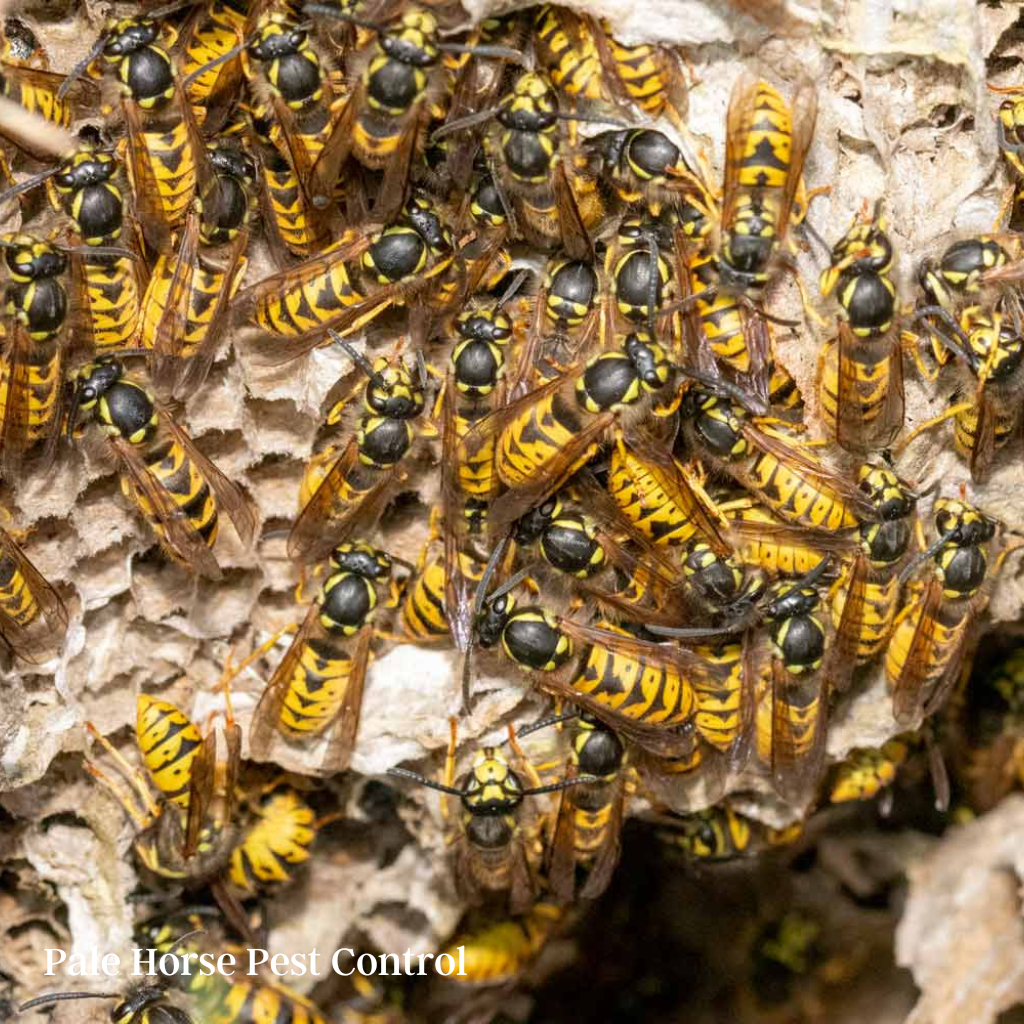Why Do Wasps Chase You?
Why Do Wasps Chase You?

Wasps chase you - only if they can see you!
The Closer You Get - The More Clearly Wasps See You!
Most people have a healthy respect for wasps, and this is no surprise.
Growing up, we can all remember being buzzed, chased and even stung by these distinctive little insects, but why do they chase us? Our Bristol wasp control customers often have stories to tell about their own unique experiences with wasps, and being chased by wasps tops the list!
Superficially it's easy to imagine that these are unhappy or highly aggressive insects, but this is a far cry from the truth, and we must try to be evidence-based.
What Wasps Will Chase Us?
Wasps of the family Vespidae are also termed "paper wasps" because they build nests from materials that consist predominantly of paper pulp and similar fibres.
Wasps nests constructed by European Vespids range in size from the size of a golf ball to the size of a small car. Wasp nests have populations from dozens to tens of thousands, and yes, they can kill you!
Many giant nests are not the result of a single queen but the merging of nests built close together. This behaviour rubs against the grain of devices designed to repel wasps in gardens by pretending to be another nest.
In the real world, we don't always see wasps making an effort to avoid one another. Nature is fickle and there is always an exception to the rule.
Evidence-based or not, we must be flexible in our thinking.
A Wasps Defence Is Divided By Cast
Nests are divided up by cast into males, queens, mature workers, and juveniles. We don't mean teenagers, but newly hatched wasps continue to mature physiologically for a period.
As the wasps complete the process of development they quickly become more effective and engaged with nest defence.
Nests with a larger proportion of mature workers and a high-value component of brood (larvae) within the nest are far more likely to focus swiftly on you than nests that are immature or matured in the past.
Colonies that are reaching maturity or have high densities of brood will have a robust capacity for self-defence.
Having the capacity to defend might not be reflected in how they defend the nest. Why? Because other important variables are at play.
Temperature, nutrition and water availability are also significant components of nest activity and ability.
Nests subjected to high temperatures, and low water availability rarely do well, whereas those with the additional or critical component of low nutrition or a good overall balance can be among the most dangerous we encounter.
A hungry wasp is often an angry wasp.
One example of this was a wasp nest in a large, heavy, planter in a customers garden. A maturing nest had nowhere else to go so remained confined within the planter.
This densely packed, heavily populated nest seemed to have very little activity. We moved to within five feet of the planter and they swarmed us at speed, with a fury I'de never seen before, or since.
Over a thousand insects hit us in just a few seconds, in a blizzard of wasps. Very scary, even in full protective gear.
In 12 years we have dealt with thousands of nests, but those that were the most aggressive were just reaching maturity. By maturity, I mean that the number of adult wasps and larvae had reached their peak.
This is when the highest number of mature wasps look to develop and protect the highest number of larvae. Once this short period ends, the nest continues to decline in population defence until it dies off in the autumn.
Wasps: Specialised Vision
Wasps have compound eyes, and compound eyes are designed with one particular quality - they are hypersensitive to movement.
The human eye has a superb resolution, compared to most insects and we can see clearly at all ranges. Wasps can only see clearly for a few feet but can identify general movement at greater distances.
So the closer you get to these insects, the more of a visible threat you become.
It was observed that wasps do have better visual contrast than honey bees which seemed to have better visual acuity for colours.
Wasps require eyesight for the acquisition and capture of prey. To catch insects mid-flight requires excellent vision.
This is not so much of an issue for the honey bee because it has no need to hunt for insects, but does need to identify flower types by colour.
Why Do Wasps Attack You?
Most people when they see a wasp, Hornet or Yellow Jacket, start waving arms around, and this directly increases their movement signature, which is a huge threat to the wasp, so naturally, it goes on the defence.
Once agitated, the wasp will do what it can to escape or subdue the threat, and that comes with a sting in the tail.
The wasp will give chase, and you will create even more movement to evade the wasp - and you get the picture.
You will never outrun a wasp if you are running in zig-zags. Run as fast as you can in a straight line and hope the wasp has given up the chase.
Avoid Being Stung By Wasps
So what's the answer? You need to stay as still as possible. Very often people are not actually stung when they think they are.
The sting protrudes slightly from the abdomen, meaning that it can sometimes prick the skin, making us feel like we have been stung when in fact, we have not because no venom has been injected.
Additional resources and references:
Ref: Colony Defence Behaviour of the Primitively Eusocial Wasp,
Mischocyttarus cerberus is Related to Age. An excellent paper.